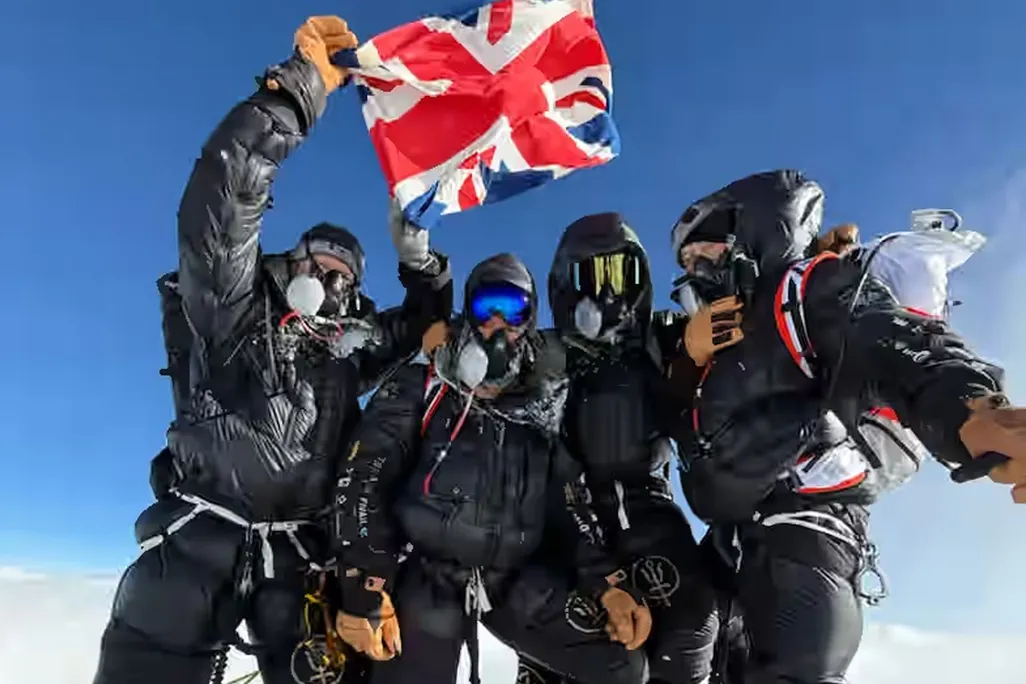
Recently, four British men used xenon gas to climb Mount Everest in a record-breaking timeline, as noted by The New York Times in They Inhaled a Gas and Scaled Everest in Days. Is It the Future of Mountaineering?
The group travelled from London to the summit and back in less than a week, an absurdly short duration. Most Everest climbers have to spend weeks acclimating to higher altitudes in multiple steps. The body starts getting ready as soon as the climber gets off the plane at Kathmandu, capital of Nepal, already at 4,600 feet above sea level, then 2-3 nights at stops before Base Camp, which is at 17,598 feet.
This was no ordinary group. The four Brits were formerly in the special forces. They had prepared methodically, spending 10 weeks sleeping in hypoxic tents, exercising with oxygen-depriving masks to get their bodies to overproduce oxygen-carrying red blood cells. Eleven days before they left the UK, they inhaled a low dose of xenon for less than an hour. It is that long hit of xenon that would get them the most attention. The climbers inhaled no xenon during the climb.
How Does Xenon Work?
Xenon is known to stimulate the body’s production of erythropoietin (EPO), a hormone that boosts red blood cell count and enhances oxygen delivery.
Xenon is an inert gas. It produces no chemical reaction. You can’t smell it. It cannot be used directly by the body. However, by displacing oxygen, its inhalation tricks the body. You feel like you are getting a lungful of air. The body senses the lack of oxygen and starts producing extra erythropoietin (EPO). This response is similar to that of hypoxic tents, but perhaps occurs more quickly. There is no medical consensus yet.
Hypoxic tents can be unpleasant — even dangerous. The user sets the level of oxygen deprivation. Cyclists, big-time users of the tents, tell of setting levels too high and waking up with horrible headaches. Hypoxic tents are allowed by sports regulatory bodies, however.
Is Xenon Legal?
Xenon gas has been on the World Anti-Doping Agency’s (WADA) list of banned substances since 2014 since it artificially produces EPO. However, WADA’s regulations do not apply to mountaineering, which lacks a centralized governing body. The closest thing to WADA in mountaineering, the International Climbing and Mountaineering Federation (UIAA), has expressed concerns about the use of the gas but has not ruled against it.
Perhaps the most famous case of EPO use was Lance Armstrong, who won the Tour de France 7 consecutive times but was stripped of his titles for using EPO, among other performance enhancers. EPO use was said to be rampant among pro cyclists.
The Economics of Everest
Experts warn against self-medication with xenon gas due to its potentially life-threatening outcomes and because the effect of xenon has not been sufficiently studied. To the Nepalese government and the sherpas, however, xenon is an economic concern. The shortened timeline will, of course, mean shorter deployment for sherpas, for whom working as climbing guides is a time-honored profession. Sherpas are the rock stars of Nepal — the rock being that which comprises the Himalayas. Should xenon catch on, Nepal could suffer a significant loss of tourism.
Nepal could, of course, issue more licenses to make up the difference, but there may be a limit on how many are willing and able to make the climb.
The total cost of an Everest expedition ranges from $45,000 to $100,000. Of that $ 11,000, goes to the Nepalese government for a permit, and between $5,000 and $15,000 to the Sherpa(s), not including tips (add another $1,000 to $5,000).
In 2019, a record number of climbers (891 ) managed to reach the summit of Mt Everest, though more made the attempt and some came from the Tibet side.
Is It Wrong to Inhale?
Using xenon for mountain climbing, though not against the rules, still raises the question of ethics. One of the British climbers, Alistair Carns, is a member of Parliament. He justifies the use of xenon saying they could not have spared six to eight weeks of public service to climb Everest.
Lukas Furtenbach, who organized the expedition, sees the future of commercially guided mountaineering on Mount Everest in this early success. In fact, he is planning to offer two-week round-trip excursions to Mount Everest using xenon gas, early next year.
